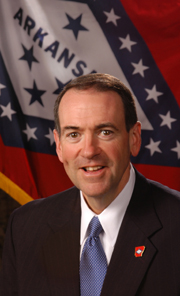Although I don’t believe it tells us much we didn’t already know, this Vanity Fair article by Evgenia Peretz (child of Martin, but I’m trying not to hold that against her) is worth a look. Peretz looks back at the way the media covered the 2000 presidential campaigns and recalls how the press corps turned into the high school Kewl Kids Claque who treated Al Gore like the chess club nerd.
In 2000, the media seemed to focus on a personality contest between Bush, the folksy Texas rogue, and, as The New York Times referred to Gore, “Eddie Haskell,” the insincere brownnoser from Leave It to Beaver. ABC anchor Claire Shipman, who covered the 2000 campaign for NBC, says, “It was almost a drama that was cast before anyone even took a good look at who the candidates were.” …
…A study conducted by the nonpartisan Pew Research Center and the Project for Excellence in Journalism found that 76 percent of stories about Gore in early 2000 focused on either the theme of his alleged lying or that he was marred by scandal, while the most common theme about Bush was that he was “a different kind of Republican.”
Peretz provides plenty of examples and names names. She also gets reaction from Al and Tipper Gore. She repeats the famous quote by Margaret Carlson: “You can actually disprove some of what Bush is saying if you really get into the weeds and get out your calculator, or look at his record in Texas. But it’s really easy, and it’s fun to disprove Al Gore. As sport, and as our enterprise, Gore coming up with another whopper is greatly entertaining to us.” And be sure to read the section on page 5, “Running the Gauntlet.” Here’s just a taste:
The Washington Post‘s David Broder later found Gore too focused in his convention speech on what he’d do as president. “But, my, how he went on about what he wants to do as president,” wrote Broder. “I almost nodded off.” As for the environment, while Gore was persuaded by his consultants not to talk about it as much as he would have liked, whenever he did, many in the media ignored it or treated it as comedy. Dowd wrote in one column that “Al Gore is so feminized and diversified and ecologically correct, he’s practically lactating.” In another, referring to his consideration of putting a Webcam in the Oval Office, she wrote, “I have zero desire to see President Gore round the clock, putting comely interns to sleep with charts and lectures on gaseous reduction.”
Dowd’s column in the New York Times today, btw, is a catty little screed about Barack Obama called “The 46-Year-Old Virgin.” Let it stay behind the NYT subscription firewall.
Peretz doesn’t mention another New York Times columnist, Paul Krugman, who wrote one column after another pointing to the big, glaring absurdities in Bush’s economic promises. Here’s one, from September 24, 2000:
George W. Bush is still using the four-dollar routine in his public appearances — the one where he pulls out four dollar bills to represent the projected budget surplus, then says that he plans to use only one of those bills, one-quarter of the surplus, for tax cuts. Anyone who has looked at his campaign’s own numbers (or who read this column a week and a half ago) knows that this isn’t right — that the tax cut would actually use up more than a third of the surplus. But most commentators seem to think that this is a minor detail — a quarter, a third, what’s the difference? (About $450 billion, but who’s counting?)
Meanwhile, Al Gore got a pummeling from some commentators — and, of course, Mr. Bush’s campaign — over the dog story, in which he told an anecdote about an expensive human drug that costs only one-third as much if prescribed by a vet. It turns out that he was looking at wholesale prices; when you look at retail prices the number is more than one-third, though less than one-half. My God! Does this man have the integrity to be president?
Although both cases involve misstated fractions, they are very different in other ways. Mr. Gore’s numbers were off, but the thrust of his story — that drug companies engage in price discrimination, charging what the traffic will bear — is true. On the other hand, the intended moral of Mr. Bush’s story — that the budget will easily accommodate his tax cut, that it leaves plenty of money with which to secure the future of retirees, rebuild the military, and all that — isn’t at all true.
I heard Paul Krugman speak a couple of years later. He said the New York Times editors wouldn’t let him use the word “lie” to explain Bush’s campaign promises. So instead of saying “Bush is lying” — which is what he wanted to say — he had to write that what Bush said “isn’t at all true.”
Krugman continued,
Just to revisit the arithmetic one more time: Let one dollar bill represent $100 billion of projected surplus. If we put Social Security and Medicare in ”lock boxes,” the remaining surplus amounts to $18 — of which $16 will be used up by Mr. Bush’s tax cut. And Mr. Bush has promised new spending that is more than twice, though less than three times — hey, I don’t want to be inaccurate! — as much as the money he actually has left.
So Mr. Gore got the details wrong but represented the basic situation correctly; Mr. Bush also got the details wrong but fundamentally misrepresented the situation. And that’s not the only difference. Mr. Gore told his story once, and didn’t repeat it after the details were questioned. Mr. Bush continues to tell his story even though it is demonstrably inconsistent with the numbers his own campaign has put out.
Alas, in mainstream media Paul Krugman was just about the lone voice crying in the wilderness in 2000. The Kewl Kids ignored him and made fun of Gore’s earth-tone suits.
Peretz leaves out the role of right-wing media infrastructure in this mess; see, for example, Eric Boehlert on David Brock (Salon, May 11, 2004):
The right-wing media warfare naturally is most visible during presidential election years. “I’ve been saying for six months, no matter who was running for office this year, the right has a system in place to caricature that person,” says Brock. “This is what I realized after 2000 — that what happened to the Clintons during the ’90s really had very little to do with the Clintons because the same thing happened to Gore in 2000. And then it happened to [Sen. Tom] Daschle when the Senate changed hands in 2001, and it happened to the mourners of [the late Sen.] Paul Wellstone in 2002. It goes on and on.” After witnessing how this Republican “noise machine” again worked so well in shaping the caustic and undermining press coverage of Al Gore’s presidential campaign in 2000, Brock is trying to awaken the public from slumber about these techniques. …
… Catching Rush Limbaugh or contributors to Fox News spreading misinformation may sound like “shooting fish in a barrel,” but Brock says the right-wing noise machine’s effect on the mainstream press poses a large danger to rational debate and coverage of issues. Too often, he says, what the right concocts ends up — often within hours — percolating in mainstream press outlets, which, rather than debunk the Republican spin, uncritically adopt it as their own. “If the mainstream media were doing their job, Media Matters would not have to exist,” Brock told Salon.
After this interview, the “system” successfully turned John Kerry into a cartoon. Has anything changed? Does the VRWC still have what it takes to dominate media next year? And have the Kewl Kids learned anything? I fear the answers are no, yes, and no.

 Arkansas Gov.
Arkansas Gov.  Huckabee may be a nice fella, but he is waaaaaay right wing. On any social issue you can name — abortion, embryonic stem cell research, gay marriage, gay adoption, gun control — he is as firmly right wing as a person can be without falling off the planet. Would the press soft-pedal his extremism just because they think he’s a nice fella? You bet they would. Plus, he’s a governor, which the CW says is better than being a senator — or former mayor of New York City — if you want a presidential nomination. This means that if he begins to get some media attention, he could be a real contender for the Republican nomination.
Huckabee may be a nice fella, but he is waaaaaay right wing. On any social issue you can name — abortion, embryonic stem cell research, gay marriage, gay adoption, gun control — he is as firmly right wing as a person can be without falling off the planet. Would the press soft-pedal his extremism just because they think he’s a nice fella? You bet they would. Plus, he’s a governor, which the CW says is better than being a senator — or former mayor of New York City — if you want a presidential nomination. This means that if he begins to get some media attention, he could be a real contender for the Republican nomination.